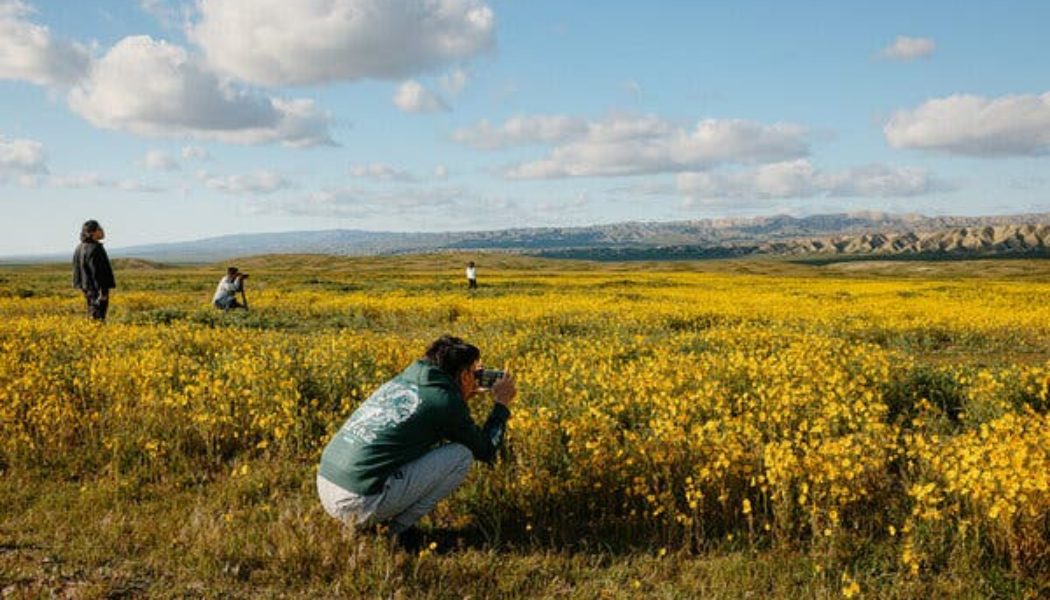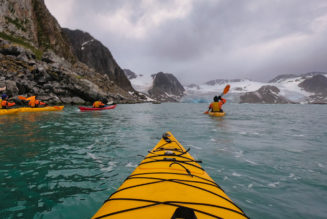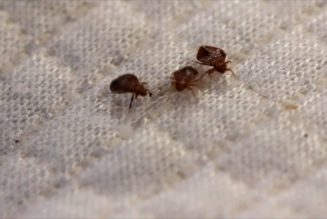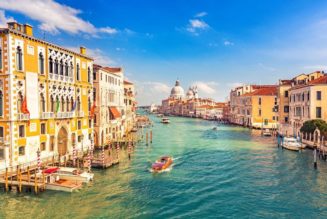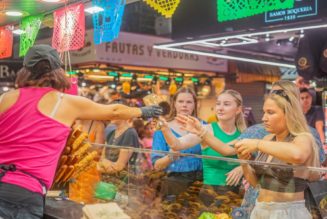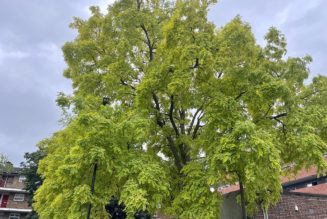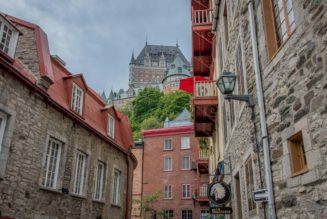With the arrival of spring, there’s a silver, or really, a multicolored lining to the extreme weather that has battered the west all winter: the promise of wildflower-filled weeks and months ahead, particularly in Southern and Central California and Arizona’s Sonoran Desert.
“We are anticipating a good to better-than-average wildflower bloom,” said Jorge Moreno, an information officer for California State Parks. Conditions are similarly favorable to the east, according to Michelle Thompson, chief of communications for Arizona State Parks and Trails.
The winter’s precipitation has led to whispers of a “super bloom” this spring, similar to the frenzy of wildflowers that carpeted the California and Arizona desert in the winter and spring of 2019.
There’s only one problem with that: “There is no universally accepted definition of a super bloom by the scientific community,” said Ana Beatriz Cholo, a spokeswoman for the Pacific West region of the National Park System, adding that some definitions focus solely on desert blooms, while others simply refer to an above-average profusion of spring blooms. “But most folks will agree that a super bloom entails an unusually large and colorful display of wildflowers that result from substantial and well-timed rains.”
The bottom line: 2023 is shaping up to be an outstanding spring for wildflowers. Some spots will hit super-bloom levels, though they are unlikely to be as widespread as in 2019.
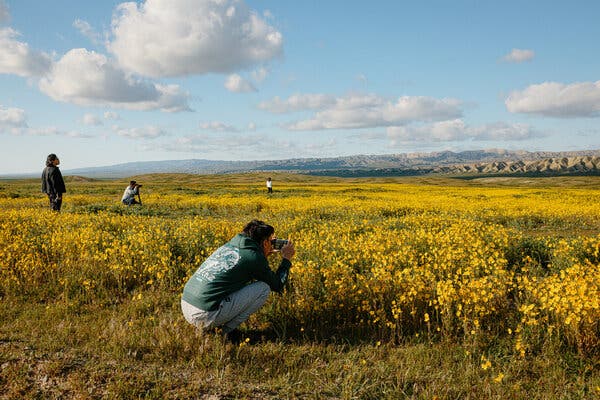
Be prepared for crowded conditions at some wildflower destinations, and be certain to practice leave-no-trace principles — stay on designated trails and roads, pack out all trash and don’t trample or pick flowers in your quest for a perfect photo. Walker Canyon in Lake Elsinore, Calif., is currently closed to visitors after suffering damage as a major destination during the 2019 super bloom.
Check the Theodore Payne Foundation Wildflower Hotline for bloom updates in Southern and Central California, and both California and Arizona provide updated wildflower reports for their state parks. For all destinations, visit park websites when planning your visit for more flower updates, safety tips and more.
Here are 10 destinations for bloom-seekers to visit in California and Arizona, listed roughly from north to south in each state.
California
Carrizo Plain National Monument
What: A swath of grassland in the center of Central California just over an hour from San Luis Obispo, Carrizo Plain National Monument is shaping up to have a particularly stunning year for wildflowers, with hillside daisies, baby blue eyes and phacelia already blooming and more to come.
When: While there are already ample blooms to be found, park officials are expecting the flowers to peak in the coming weeks and last through the month, depending on weather. Visit the park’s website and social media for updates on flowers and the condition of roads, some of which have been rendered impassable by recent storms.
Antelope Valley Poppy Reserve
What: An hour-and-a-half north of Los Angeles, the grasslands of the Mojave Desert come alive with golden orange California poppies, along with filaree and goldfields.
When: The poppies are in bloom, with more anticipated in the coming weeks; expect to find blooms in the reserve from early- to mid-May. You can check on the up-to-the-minute bloom status via the park’s live poppy cam, and be sure to drive with caution on Lancaster Road; erratic driving and random stops for photos are to be expected, according to the park’s website.
Channel Islands National Park
What: This stunning string of islands off the coast of Oxnard and Ventura is a destination for largely untouched wilderness, and is accessible via a one- to four- hour ferry ride with a park service contractor or private watercraft. Look for lupines, goldfields, blue dicks and giant coreopsis.
When: Bloom timing differs across the five islands, since each has a unique environment. Santa Barbara Island is expecting blooms from mid-April to early May, while San Miguel Island should bloom in early May. Visit dedicated island websites for more information.
Santa Monica Mountains National Recreation Area
What: Hugging the California coast north of Malibu and easily accessible from Los Angeles, the Santa Monica Mountains National Recreation Area is expecting to have a super bloom, of sorts, with a wide variety of flowers, including white popcorn flowers, cream chaparral yucca flowers, purple lupines and more.
When: Blooms, including poppies, sunflowers and Mariposa lilies, are already popping up amid the mountains, which are lush and green from the extensive rains. Expect flowers to peak this month and into May, with some higher elevation areas blooming into the summer months. Check the What’s Blooming newsletter from the park for updates.
Chino Hills State Park
What: Tucked in the foothills of the Santa Ana Mountains just east of Los Angeles, and about an hour’s drive away, Chino Hills State Park is a much-photographed destination for hills lush with orange California poppies, plus black mustard, school bells, Canterbury bells and arroyo lupine.
When: The park is in bloom. Expect flowers through early- to mid-May. Check the park website for flower news and park updates; recent storms have caused extensive trail closures.
Cabrillo National Monument
What: San Diego’s Cabrillo National Monument, which commemorates where Juan Rodriguez Cabrillo first stepped on the West Coast of the United States (the first European to do so), is also a bona fide flower destination. It perches on the tip of the Point Loma Peninsula, and visitors to the park can look for bush sunflowers, Indian paintbrush, sea dahlias and more.
When: Blooms are approaching their peak. Study up using the park’s plant field guide, or download a dedicated app. Passionate wildflower enthusiasts can become a park volunteer and help with native plant preservation and propagation (email to learn more).
Anza-Borrego Desert State Park
What: California’s largest state park, Anza-Borrego Desert State Park, is two hours east of San Diego and is a frequent destination for wildflower viewing. The desert climate allows for some of the earlier blooms in California, including desert primrose, desert sunflower and blooming cactuses.
When: Because of the park’s size, different sections get different amounts of rainfall. Parts of the park are already in bloom, and you can expect to find pockets of flowers through the spring and into early summer. Check the park’s website for wildflower updates and photos.
Arizona
Lost Dutchman State Park
What: Forty miles east of Phoenix, at the base of the Superstition Mountains, Lost Dutchman State Park is named for a storied, vanished gold mine and is home to a variety of beautiful desert flowers, including chuparosa, lupines, fiddlenecks and Patagonia lilies.
When: The park started blooming in mid-March. Visit the park’s Facebook page for weekly updates.
Picacho Peak State Park
What: About 75 miles south of Phoenix and 40 miles north of Tucson, Picacho Peak State Park boasted a true super bloom in March, with blankets of yellow poppies and purple lupines cascading down the mountain.
When: While the super bloom has passed and the poppies are fading, visitors can still find plenty of flowers in the weeks to come.
Catalina State Park
What: Just outside of Tucson, Catalina State Park is crouched at the base of the Santa Catalina Mountains and is a year-round destination for cactuses and desert plants, which are particularly stunning in bloom.
When: Cold weather has delayed the flowers at this park a bit, but blooms are now happening in earnest. Visit the park’s Facebook page for the latest.
Follow New York Times Travel on Instagram, Twitter and Facebook. And sign up for our weekly Travel Dispatch newsletter to receive expert tips on traveling smarter and inspiration for your next vacation. Dreaming up a future getaway or just armchair traveling? Check out our 52 Places to Go in 2023.
